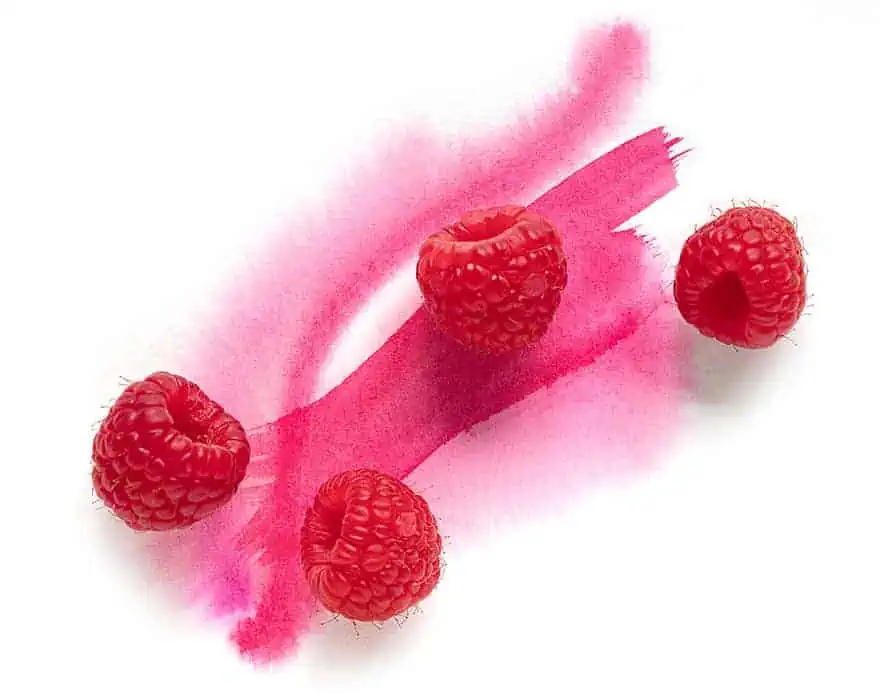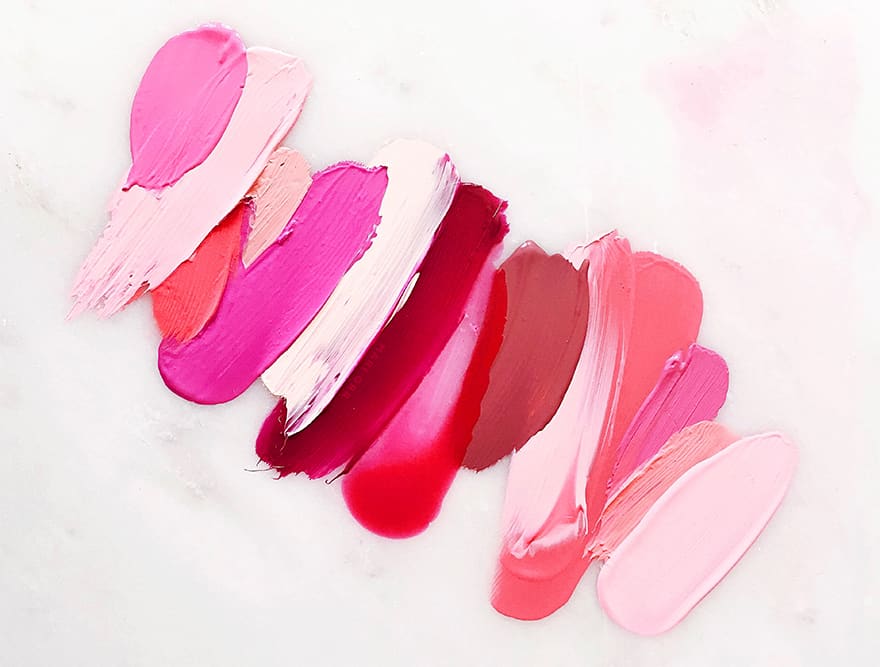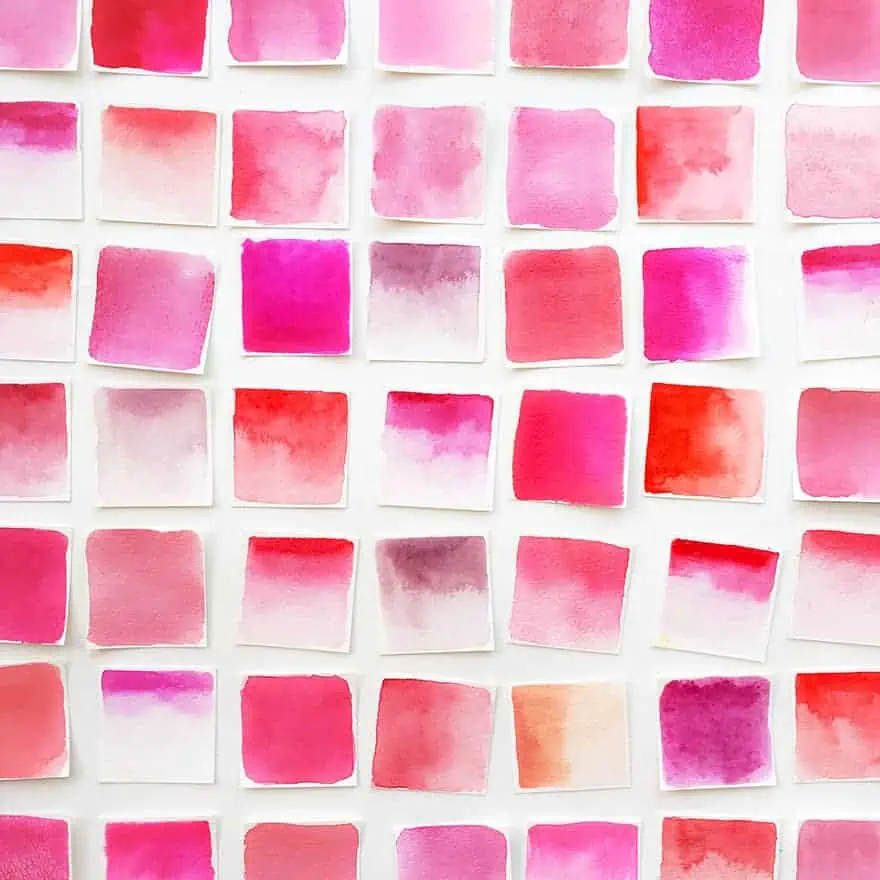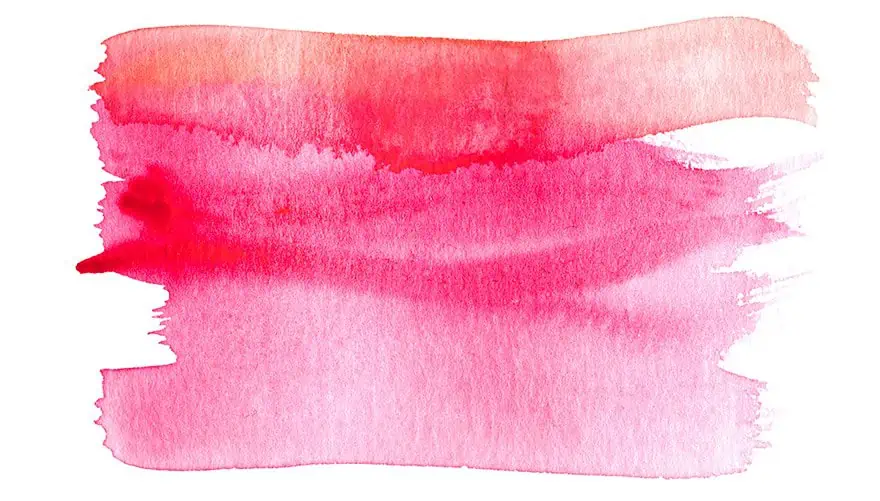What Colors Do You Mix to Make Pink
This post may contain affiliate links. We may earn a small commission from purchases made through them, at no additional cost to you.
The color pink as we know it today is really a variation and subtle shade of the primary color red. The color pink was first coined around the 17th century. Pink represents various meanings in different cultures around the world. It is seen as the color of trust in Korea and in Japan a masculine color, representing a fallen samurai soldier. There are so many shades of pink and various options for mixing the exact hue that you are looking for in your work. The following article will teach you how to make pink paint, from pastel pink, baby pink and blush pink right through to your darker pink palettes.
- 1 The Meaning of Pink
- 1.1 The Color Pink for Relaxing and Nurturing Properties
- 1.2 Childhood Shades of Pink
- 1.3 How Different Hues of Pink Affect Us
- 2 How Do You Know What Colors Make Pink?
- 2.1 Figuring Out Color Bias Or Temperature
- 2.1.1 Warm Red Shades
- 2.1.2 Cool Red Shades
- 2.1 Figuring Out Color Bias Or Temperature
- 3 How to Make Pink Paint Using Variations of White?
- 4 How to Make Different Shades of Pink Paint?
- 4.1 Toning Down Shades of Pink
- 4.2 What Colors Make Light Pink?
- 4.3 Exact Formulations for Mixing Shades of Pink
- 5 Making Use of Pink in Your Artwork
- 5.1 Colors You Can Use With Pink
- 5.2 Playing With Pink
- 5.3 Contrasting Colors With Pink
- 5.4 Pink and Neutral Colors
- 6 Frequently Asked Questions
- 6.1 How to Make Pink Without White Paint?
- 6.2 What Colors Make Light Pink?
- 6.3 Is Pink a Tint or Shade?
- 6.4 What is the Origin of Baby Pink?
The Meaning of Pink
Before we begin exploring what colors make pink and how to make pink paint, it would be useful to understand what the color pink means. Pink is most often associated with love and is seen used widely for Valentine's day gifts and cards, it optimizes femininity, hope, warmth and inspiration. Pink is the chosen color for breast cancer awareness. Often baby girls' bedrooms will be decorated in pink, whereas boys' rooms may typically be decorated in shades of blue. With the 'pick me up' energy of pink it can really lift up any piece of artwork without overwhelming other colors.

The Color Pink for Relaxing and Nurturing Properties
If you look at the psychology of color in relation to pink, it comes up with many interesting theories and associations. Color has the ability to influence us as humans in terms of emotions and reactions. Pink is said to offer a calming effect and has even been known to be used in hospitals and prisons in order to maintain a sense of calm. Softer shades of pink may also invoke joy, creativity and relaxation with an almost 'motherly' effect. Bolder shades of pink may incite vibrancy and euphoria in some people. Society is also hard-wired to believe that girls like pink and boys do not, however is a rapidly changing psychology as all people are beginning to embrace pink more.
You can make use of color and psychology to create a certain mood or feeling in your art, even with what you choose to wear or your home decor.
Childhood Shades of Pink
Pink is very often associated with the innocence and sweetness of childhood, particularly as a young girl growing up. Toys are marketed to girls in shades of pink which creates a reminiscence of safety, calm, playfulness and nurturing. Many brands for girls use pink in their marketing, from toys through to girls clothing and cartoon characters. Many sugary treats create these same soft, warm, nostalgic feelings. Think of pastel pink candy floss, sherbet and baby pink glazed biscuits or birthday cupcakes. Shades of pink just make them all the more enticing and desirable.
How Different Hues of Pink Affect Us
In order to create the exact emotional reaction or feeling that you would like to portray in your specific artwork, it is necessary to understand what reactions are produced by different shades of pink. A deeper or brighter shade of pink may portray more vibrancy and passion. If the shade has a lot of red in it, this may even cause slight agitation or energy in some people. Paler shades of pink are more nostalgic, possibly childlike and innocent. It is therefore important to understand what emotions you are trying to add to your piece by using shades of pink.

How Do You Know What Colors Make Pink?
Pink is traditionally a combination of red and white paint, however, one does need to ask the question, how many shades of pink are there? You can make a vast array of pink shades using different types of red, like maroon, cadmium, cayenne and cherry to name but a few. You can also play around with the quantities of white to red paint or add a little blue or yellow tint. As with all color mixing, you will need to start off with color as your base, when making pink, your base is always red. Here is where you would choose either a cooler spectrum red or a warmer one to start with. This choice will have the most influence on your shade of pink.
Figuring Out Color Bias Or Temperature
As we have mentioned, choosing the correct bias or temperature of your base red is very important for your desired shade of pink. Cooler reds would be closer to your purple hues as they have a touch of blue in them. Warmer color reds are closer to orange as they contain hints of yellow. Warmer variations of red will produce shades of pink that have more orange in them, like peach, salmon, coral and strawberry. Reds with a blue or cooler tint to them will tend to give you pink shades like crepe, magenta, ballet slipper and hot pink. The following is a breakdown of reds from warmest to coolest color bias:
Warm Red Shades
- Light red
- Imperial red
- Scarlet
- Cardinal red
- Chili red
- Fire engine red
- Candy apple red
- Coquelicot red
Cool Red Shades
- Crimson
- Vermilion
- Burgundy
- Hibiscus
- Carmine
- Magenta
- Indian red

How to Make Pink Paint Using Variations of White?
We have established that the type of red you choose will affect the result of the pink that you mix, the type of white you choose also has an effect on the shade of pink. You can use a titanium white, which was developed in the twentieth century, it has good tinting qualities and is strongly opaque, the only thing to bear in mind is that it is a cool color and can easily dull your warm reds; it is advisable to add a little color like yellow back into this.
Zinc white is warmer than titanium white and has been around since the nineteenth century, it was very close in quality to the old lead white, which was of course good but toxic and is mostly banned today. Zinc white is very good for maintaining saturation and the integrity of your base color. A good way to experiment with various color ratios and what colors make up your desired pink shade, is to practice on a plain piece of paper. You will need the shades of red that you have, white and a light yellow paint.
Start by preparing your piece of paper with four areas for each of your shades of red paint. Paint the first quadrant with each type of red that you have. In the next quadrant, next to each of your first squares, mix a little zinc white paint with each shade of red and paint this into the square. Zinc is less opaque so your color at this point will come out in the same way.
In your third square, in line with each red hue, you will do the same process with titanium white paint. You will find these pink colors less transparent than the zinc white ones. You may notice that the color saturation is very altered by adding white paint, either zinc or titanium.

How to Make Different Shades of Pink Paint?
In any art piece it is important to have a variety of different shades to choose from. When you have found the shade of pink you are looking for, you will have to mix a few varieties of color from this in order to create tints and shades of that color. This will bring a sense of realism to your work using real life aspects of light and dark.
Toning Down Shades of Pink
Often in your artworks, you will want to mute your shades of pink rather than using a very bright hue. In learning how to make dark pink, you will need to add a little more base red. Be very sparing when attempting this, as you only require a tiny bit of red, otherwise your pink will become too dark. Should this be what you require, this is how to make dark pink. If you are looking for a cooler pink, you can try adding a tiny bit of black or even a touch of purple or blue.

What Colors Make Light Pink?
By now you will know how to make pink by simply adding white paint to red, of either the warmer or cooler variety. The question is how to make pink without white paint? The answer is yes you can, you would use a very pale yellow to blend into a pink hue. You could even combine white and yellow to produce pink. The yellow will highlight the pink as opposed to dulling it with white colors. These pink hues created by using yellow will be much warmer than with white alone, more along the lines of coral or peachy colors. Adding yellow with white adds far more warmth than just white pigment alone.

Exact Formulations for Mixing Shades of Pink
There are proven methods of how to make exact shades of pink, whether this is pastel pink, baby pink or blush pink. If you follow the below formulae for making each shade of pink, you cannot go wrong and will easily make your pink hues in a consistent way.
| Pink Hue | Hex Number | RBG Color Model (red, green or blue, added) |
| Pastel pink | #ffd1dc | 255,209,220 |
| Peach | #ffe5b4 | 255,229,180 |
| Carnation | #ffa6c9 | 255,166,201 |
| Fuchsia | #ff7ff | 255,119,255 |
| Neon | #ff6ec7 | 255,110,199 |
| Coral Pink | #88379 | 248,131,121 |
| Barbie | #e0218a | 224,33, 183 |
| Watermelon | #fc6c85 | 252,108,133 |
| Hot pink | #ff69b4 | 255,105,180 |
| Rose | #66cc | 255,102,204 |
| Magenta | #ff00ff | 255,0,255 |
| Salmon | #ff9999 | 255,153,153 |
Making Use of Pink in Your Artwork
As you can now see how many shades of pink are there, you might want to better understand how to incorporate them into your art. You might want to think about your actual design and your target market perhaps. A more pastel pink might work for certain concepts that involve childhood or innocent memories like a baby shower or such like, whereas a more blush pink would be suitable for an older or more mature target market in terms of advertising potential, something like a spa.

Colors You Can Use With Pink
Pink is a very strong color standing on its own, however various other colors have a firm role in making your shade of pink stand out. You can really bring out the properties of your chosen pink by adding color or even empty space within your artwork. You can certainly start by using colors that work well with pinks to create a statement piece and branch out to other colors in order to really showpiece the pink hue that you have chosen for your art piece or design.
Playing With Pink
You can really create a wonderful sense of playfulness in your art when you combine pink with warm colors like red and orange. These colors together work well and do not overwhelm you visually. If you want to achieve a rich, positive atmosphere, use a darker, or more hot pink combined with a bright red hue. Be aware of how you combine these colors as they can come across as loud or as if they do not match. You can still create vibrancy that is slightly toned down by using yellow or orange shades with pink.

Contrasting Colors With Pink
Pink is a very youthful and bright color, this can be highlighted and enhanced even further by using it with a contrasting shade. Darker shades like blue, purple and black contrast very well as it brings out the bright boldness of the pink. You can experiment with various techniques that have different effects on the eye. For example if you do a darker background outlined with pink, the darker area will appear further away. If you did a background in pink with a black frame the pink will make the picture appear larger due to the fact that lighter colors come forward and darker ones recede.
Pink and Neutral Colors
Should you wish to create a more harmonious and refined look, combining neutral shades like grey and brown are very effective with pink. They blend nicely and are pleasing to the eye. If you are going to use these neutral color combinations, it is advisable to lighten or tone down your pink shades. A pastel pink or baby pink would work far better than hot pink.

Frequently Asked Questions
How to Make Pink Without White Paint?
Usually white is mixed with red to produce a pink shade; however you can also use a little lemon yellow to lighten the red and produce a peach hue.
What Colors Make Light Pink?
In order to make light pink you will need to mix red and white paint. Keep adding white until you get the light shade you are looking for. This light shade combines well with neutral colors in design.
Is Pink a Tint or Shade?
Pink is a lighter shade of red, therefore it is a tint. A shade is a darker color.
What is the Origin of Baby Pink?
This term was first used in 1928. In many cultures it symbolizes baby girls; in the same way that baby blue symbolizes baby boys. Both colors are soft and calming.
What Colors Do You Mix to Make Pink
Source: https://acrylgiessen.com/en/what-colors-make-pink/